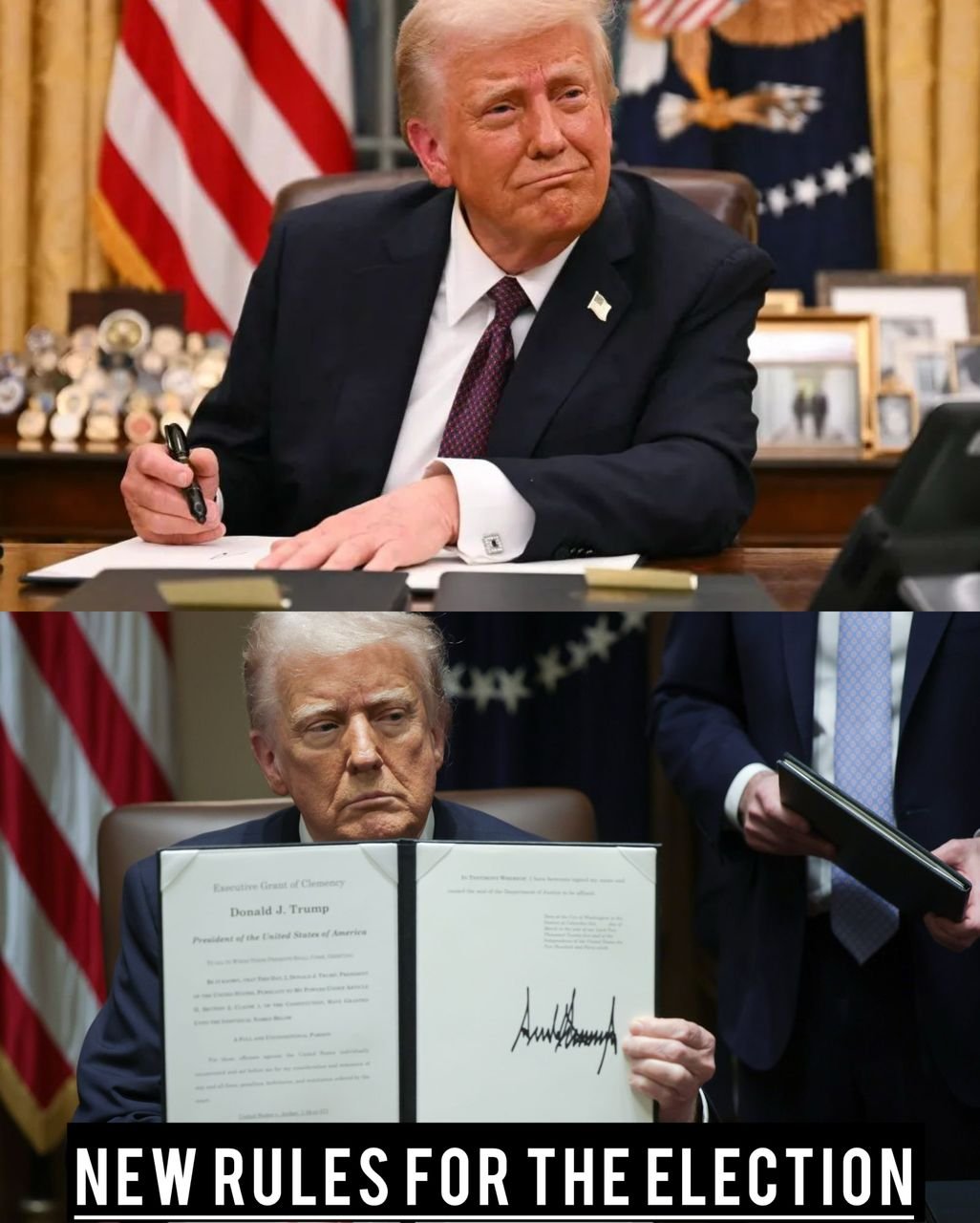The order says that voters must show proof that they are citizens of the United States and that only votes sent in by Election Day will be counted.
President Donald Trump of the United States has signed a new executive order that he says will tighten election rules before the 2026 midterms. This is related to a claim he has made many times without proof of large-scale election fraud.
The new order, which is called “Preserving and Protecting the Integrity of American Elections,” makes it very hard for people to vote. They have to meet strict new standards before they can do so.
This is what we know:
Important parts of the new executive order

Proof that you are a citizen is needed:
So that people who are not US citizens can’t vote in a federal election, which is already against the law and can get you jailed or deported, the order says that voters must show official proof of US citizenship, like a birth certificate or passport.
Federal agencies, like the Department of Homeland Security, will have to share information to help state officials find people on the voting rolls who are not citizens. Concerns have been made by voting rights groups that the citizenship requirements could make people unable to vote.
UC Los Angeles election law expert Richard Hasen wrote in a blog post, “This would stop only a tiny amount of noncitizen voter registration but stop millions of eligible voters who don’t have easy access to documents like passports from registering to vote.”
Concerns have also been raised that married women who have changed their last names might have trouble registering to vote because their birth records still show their maiden names.
Public Citizen, a lobbying group, said that about 146 million Americans do not have a passport.
Deadline for sending in votes: All mail-in ballots must be received by Election Day in order to be counted, as required by the executive order, which aims to make the voting process the same in all 50 states.
States can run their elections in a lot of different ways right now, but none of them let votes be recorded if they are cast after Election Day.
A non-profit group called the National Conference of State Legislatures says that 18 states, including battleground states, will accept mail-in ballots that come after Election Day as long as they were postmarked on or before that day.
People often point to California as an example of a state that takes a long time to count votes. Ballots can be counted up to seven days after the election as long as they were postmarked by Election Day.
Conditions for federal funding: States that don’t follow some of these new rules could lose federal money for elections.
“The Attorney General will take the right steps against states that count Federal election ballots received after Election Day.” Federal money for elections will depend on people following the rules, the presidential order says.
This could put a lot of financial stress on states, especially those that already have more flexible vote rules.
Electoral campaigns are financed at the federal, state, and local levels. People, businesses, political action groups (PACs), and sometimes the government give money.
As part of the Help America Vote Act (HAVA), the US Congress gave $55 million to states in March 2024 to improve the management and safety of federal elections.
This money was given to all 50 US states and regions according to a set formula that takes into account things like the number of people who are eligible to vote.
It also tells the Department of Homeland Security and someone from the Department of Government Efficiency, which is run by Elon Musk, to look over state voter registration lists and, if necessary, use subpoenas to make sure they follow federal rules.
“DOGE doesn’t have the power to kick people off rolls at all.” “But they could make a lot of noise if they think they’ve found fraud and then find that the voter rolls aren’t being kept up to date,” Richard Hasen wrote.
Things could go wrong with this new order.
Because the Constitution gives power over elections to the states, Trump’s order is expected to be challenged in court.
Adrian Fontes, the secretary of state for Arizona, and Kris Mayes, the attorney general for the state, are already talking about a possible case. Fontes called the executive order “an attempt to federalise elections.”
Fontes said that the order seems to be meant to make it look like there was wrongdoing in the election process so that it would be okay to “cancel the election later.”
In an interview with Votebeat on Tuesday, a nonprofit, neutral newsroom that covers US elections, he said, “It’s very planned and very, very dangerous.” “What matters is not what the executive order says, but what the end goal might be.” I think that Donald Trump may want to stay in office forever as the end goal.
President Trump is finally doing what has been needed for a long time: putting the resources of federal agencies like the Departments of Homeland Security and Justice to work helping states instead of trying to stop them from reforming our election process, which was a bad trait of the Biden administration. Hans von Spakovsky, who leads the Election Law Reform Initiative at the Heritage Foundation, said this in a statement.
Trump has often questioned the results of elections that didn’t go his way. For example, he said that his loss to former US Vice President Joe Biden in 2020 was due to widespread vote fraud, which was not true.
Leave a Reply